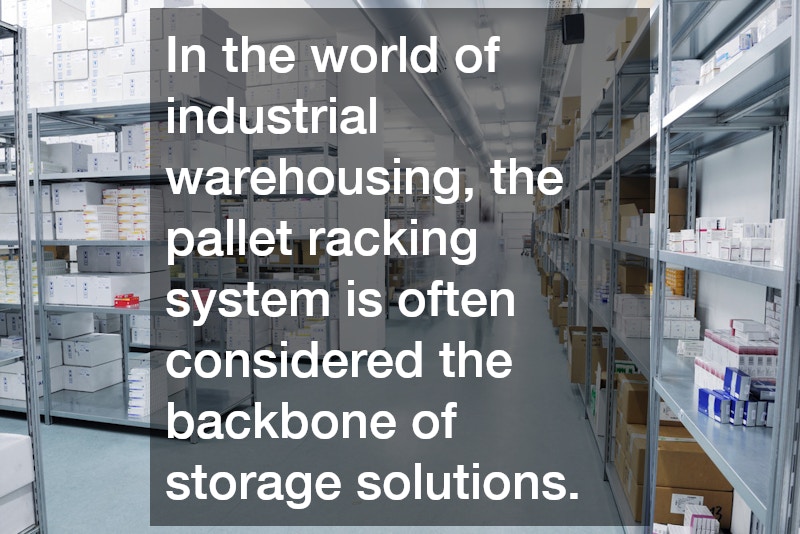In the world of industrial warehousing, the pallet racking system is often considered the backbone of storage solutions. Traditionally used for organizing and storing products, these systems have been largely regarded as static structures.
However, modern industrial demands are pushing the boundaries of how these crucial systems can be used beyond their conventional purposes. With the pressures for increased efficiency and space optimization, businesses are exploring innovative ways to leverage pallet racking systems.
This article explores several innovative uses of pallet racking systems within industrial warehouse settings, highlighting the key advantages of these new approaches. It aims to provide insights into how warehouses can evolve by adopting clever and adaptive storage solutions. By utilizing these innovative techniques, businesses can achieve not only greater storage efficiency but also enhanced operational workflow.
Optimizing Vertical Space for Increased Storage
The most apparent and traditional use of pallet racking systems is to optimize storage by utilizing vertical space effectively. Industrial warehouses have substantial overhead space that often goes underutilized if not properly managed. By maximizing vertical space, warehouses can significantly increase their storage capacity without expanding their physical footprint.
Implementing a tiered pallet racking system can allow warehouses to stack goods safely up to the ceiling, making full use of all available airspace. This approach not only doubles or triples the storage capacity but also contributes to a more organized warehouse layout. Additionally, using vertical space helps maintain ground-level accessibility, ensuring that all goods are still readily reachable with the proper equipment.
Advanced racking solutions, now frequently part of the warehouse blueprint, include automated systems which further enhance vertical space usage. Integrating automation can streamline the retrieval and storage process, minimizing human error and boosting productivity. By marrying technology with smart storage design, the potential for enhanced inventory control becomes significantly higher.
Implementing Dynamic Racking Systems for Improved Workflow
Pallet racking systems are increasingly being designed with mobility and flexibility in mind. Dynamic pallet systems, such as push-back or flow racking, significantly improve the storage and retrieval processes within a warehouse. They allow for smoother transitions and a more organized flow of goods.
In dynamic racking setups, goods can be loaded at one end and retrieved from the other, facilitating a first-in-first-out (FIFO) system crucial for perishable goods. This approach helps in maintaining the quality of inventory and reducing waste, which is particularly relevant in industries dealing with high turnover rates. The adaptability of dynamic racking systems is key to enhancing the warehouse’s overall operational flow.
Moreover, dynamic systems are instrumental in space management, adjusting to goods’ varying sizes and weights without requiring extensive manual adjustments. The integration of sensors and digital monitors can further elevate the efficiency and provide real-time data for inventory management. These features make dynamic racking systems an essential component of smart warehouses aiming to improve their workflow seamlessly.
Enhancing Safety and Accessibility in Warehouse Operations
Safety is a paramount concern in industrial settings, and pallet racking systems play a vital role in ensuring secure storage environments. Innovative racking designs have introduced features that increase safety whilst enhancing accessibility. The structural integrity of these systems is engineered to withstand significant loads, reducing the risk of collapse.
Incorporating high-strength materials and smart designs, modern racking systems come equipped with safety components like wire decking, guard rails, and automated locking mechanisms. These innovations make the handling process safer and more efficient for warehouse workers. Additionally, such systems are designed to allow easy access to stored items, minimizing the need for hazardous climbing or maneuvering of ladders.
Moreover, proper labeling and zoning within racking systems enhance the accessibility of products, thereby reducing the time workers spend locating items. Such measures not only improve efficiency but also mitigate accident risks associated with hurried or erratic movement within the warehouse. Ultimately, these advancements contribute to a safer and more effective working environment.
Ultimately, these advancements underline the fact that even the most traditional components of industrial operations can find new life through innovative approaches. As industries move forward, learning to adapt and integrate these innovative uses of pallet racking systems will be crucial in maintaining competitive advantage. The journey towards smarter and more efficient warehouses continues, guided by the versatility and potential of the pallet racking system.
.

